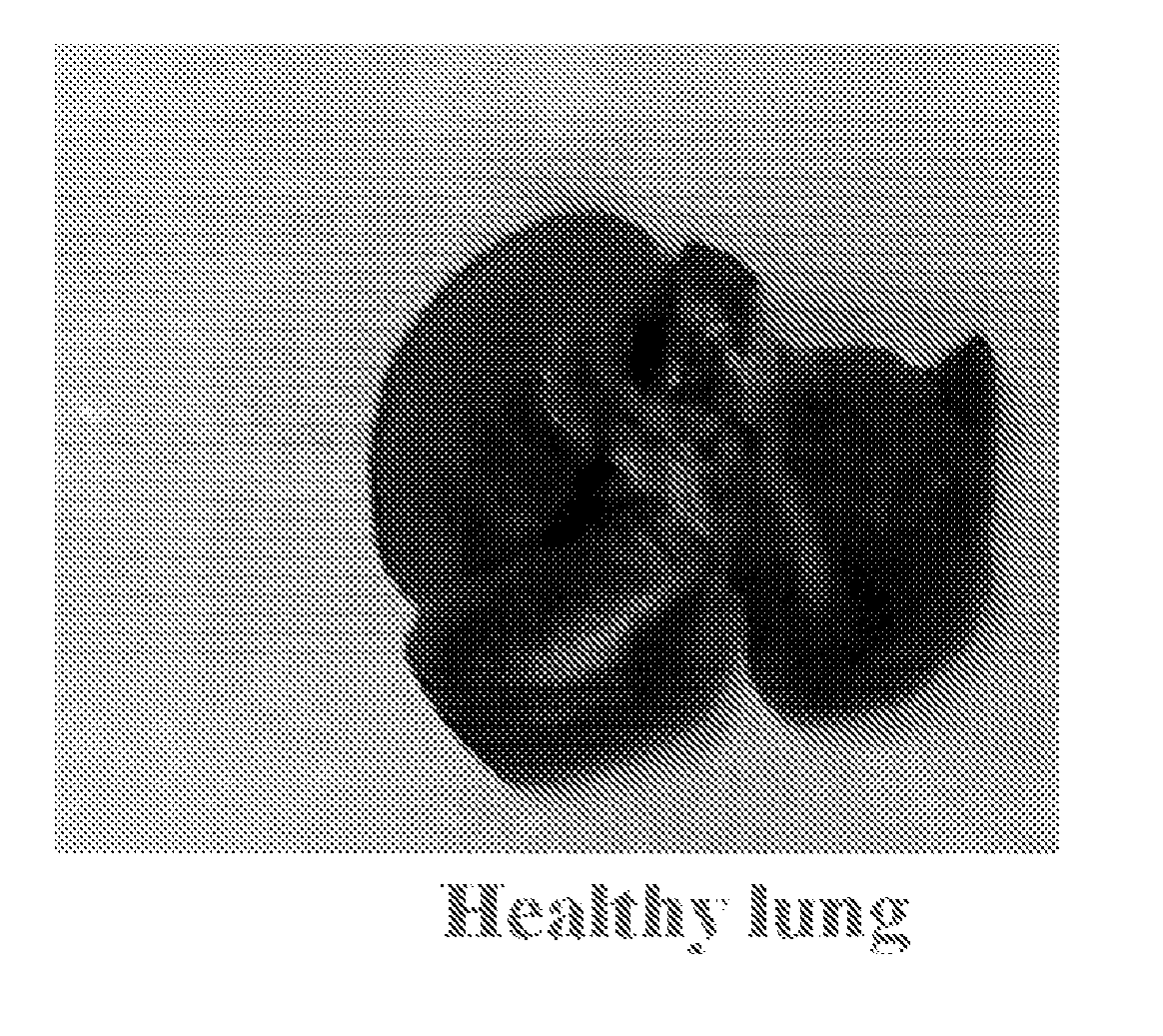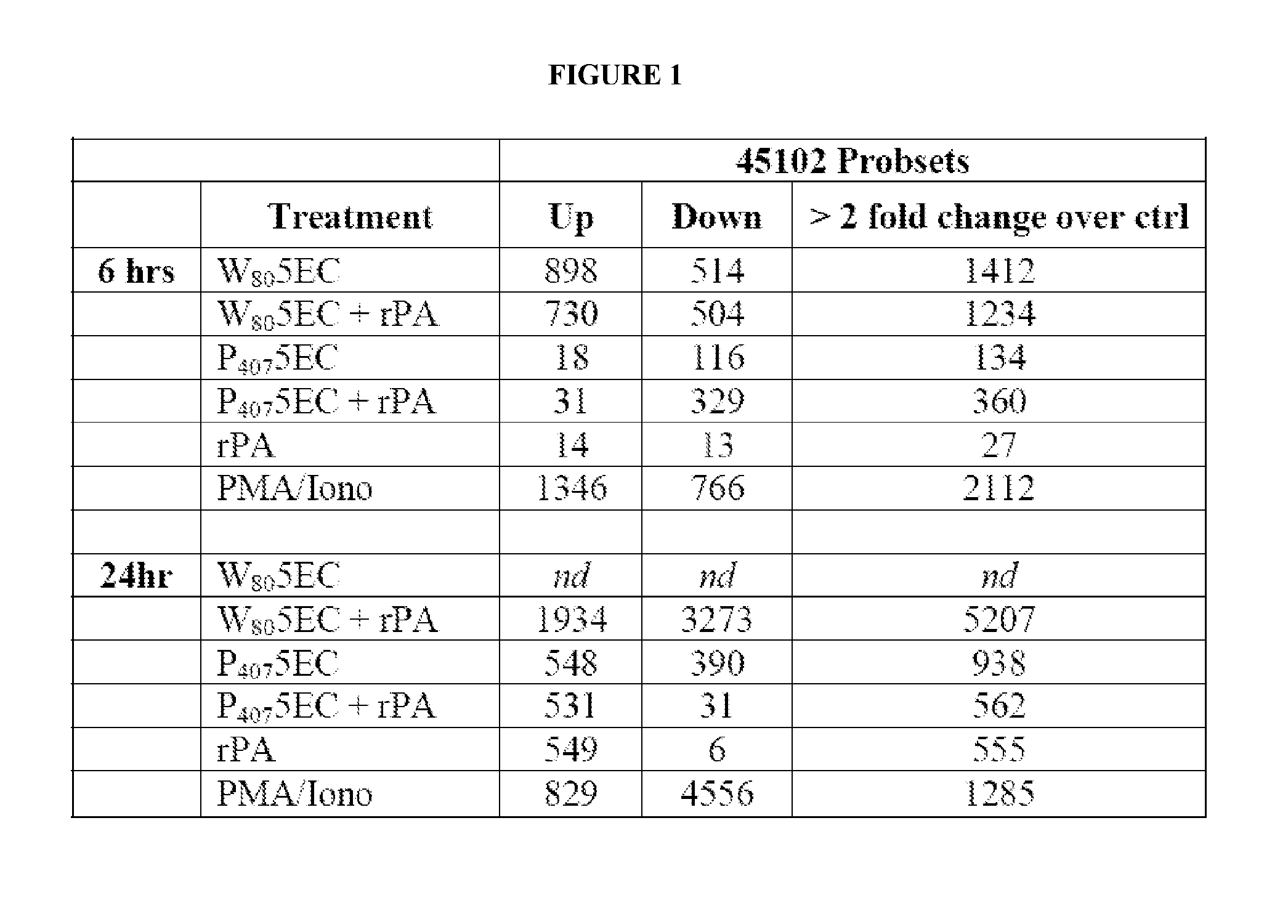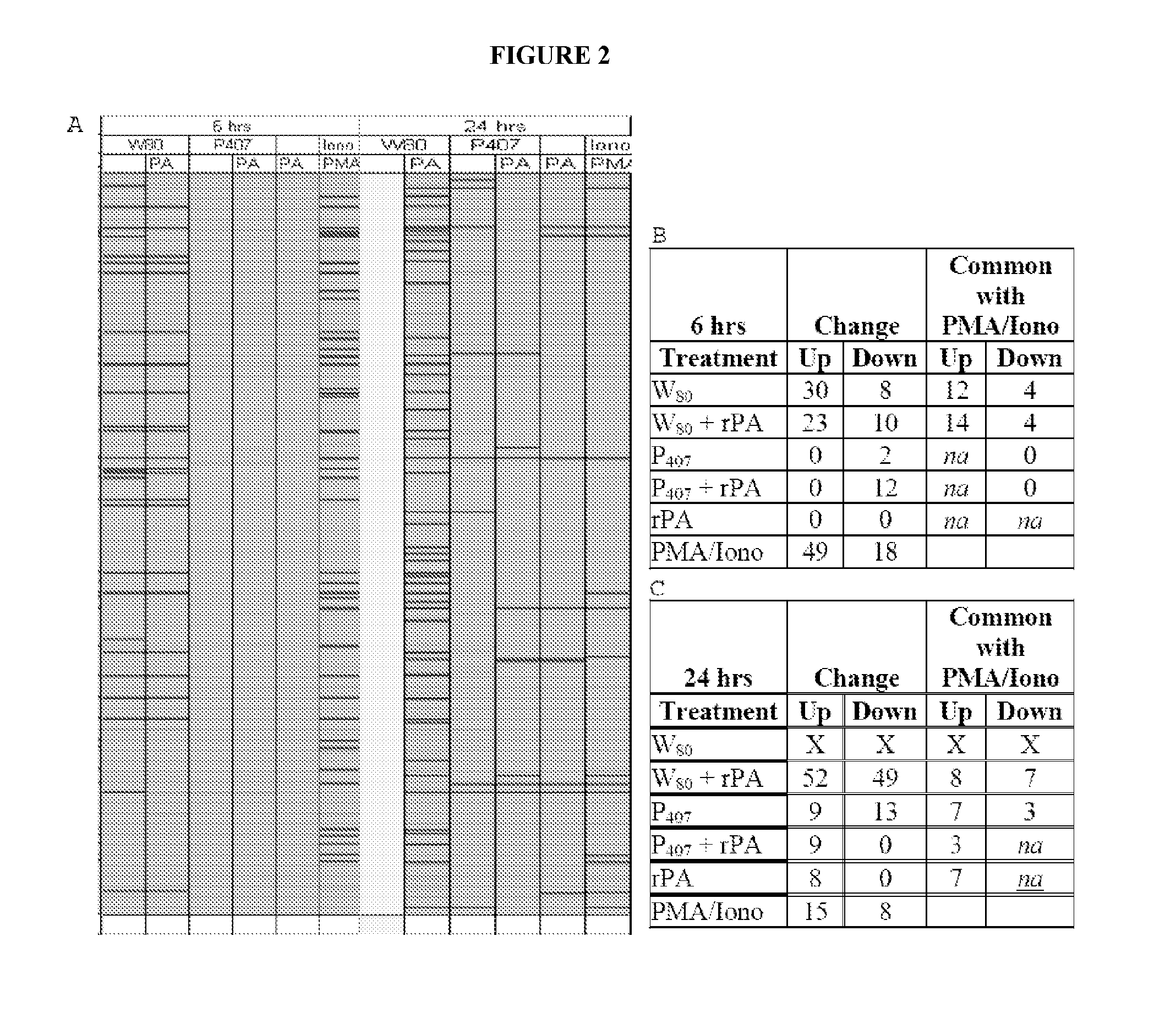Cancer vaccine compositions and methods of using the same
a technology of immune response and composition, which is applied in the direction of drug composition, immunological disorders, antibody medical ingredients, etc., can solve the problems of significant cancer-related deaths, incomplete remission, and small prognosis for more advanced tumors, so as to reduce the risk of recurrence of cancer, increase spleen cellularity, and increase expression of ifn-
- Summary
- Abstract
- Description
- Claims
- Application Information
AI Technical Summary
Benefits of technology
Problems solved by technology
Method used
Image
Examples
example 1
Methods of Formulating Emulsions
[0332]The emulsion is produced as follows: an oil phase is made by blending organic solvent, oil, and surfactant and then heating the resulting mixture at 37-90° C. for up to one hour. The emulsion is formed either with a reciprocating syringe instrumentation or Silverson high sheer mixer. The water phase is added to the oil phase and mixed for 1-30 minutes, preferably for 5 minutes. For emulsions containing volatile ingredients, the volatile ingredients are added along with the aqueous phase.
[0333]In one example, the emulsion was formed as follows: an oil phase was made by blending tri-butyl phosphate, soybean oil, and a surfactant (e.g., TRITON X-100) and then heating the resulting mixture at 86° C. for one hour. An emulsion was then produced by injecting water into the oil phase at a volume / volume ratio of one part oil phase to four parts water. The emulsion can be produced manually, with reciprocating syringe instrumentation, or with batch or cont...
example 2
Novel Adjuvant Composition and Methods of Using the Same to Skew T-Helper-Type Immune Responses
[0336]Cells (JawsII) were treated in vitro with a 0.0001% dilution of Tween 80-based nanoemulsion (NE) (W805EC), or poloxamer 407-based NE (P4075EC), with either the NE alone or mixed with recombinant protective antigen of B. anthracis (rPA). Control cells were incubated with either rPA alone, or with protein kinase C (PKC) pathway activators, phorbol myristate acetate (PMA) and ionomycin (Iono). Microarray analysis of transcription activation was performed after cells were treated continuously for 6 or 24 hours. RNA was subsequently isolated, amplified, and then gene expression analyzed using a 45,000 probeset mouse GENECHIP 430.20 at the University of Michigan Comprehensive Cancer Center (UMCCC) Microarray Core Facility. The GENECHIP 430.20 MAPK pathway includes 670 probesets and the GENECHIP 430.20 TCR pathway includes 268 probesets. Experiments were conducted to determine the ability o...
example 3
NE Adjuvant Alters Gene Expression
[0338]Analysis of gene transcription patterns demonstrated that W805EC has a unique effect on gene expression in dendritic cells. W805EC-induced changes in JawsII transcription are not dependent on presence of antigenic rPA protein and are in stark contrast to the minimal effect of P4075EC NE (See FIG. 1). Analysis of specific signaling pathways including mitogen activated protein kinase (MAPK), T-cell receptor (TCR), B-cell receptor, Toll-like receptors, apoptosis and others, indicate unique patterns of gene expression in cells, subsequent to administration of the NE to the cells. A significant increase in the protein kinase and MAPK associated gene transcripts was identified in all analyzed pathways.
[0339]Genes associated with the MAPK pathway displayed altered expression levels subsequent to administration of W805EC NE (See FIG. 2). A large number of alterations in gene expression were observed for the W805EC NE-treated cells, whereas fewer numbe...
PUM
| Property | Measurement | Unit |
|---|---|---|
| particle sizes | aaaaa | aaaaa |
| particle sizes | aaaaa | aaaaa |
| particle sizes | aaaaa | aaaaa |
Abstract
Description
Claims
Application Information
 Login to View More
Login to View More - R&D
- Intellectual Property
- Life Sciences
- Materials
- Tech Scout
- Unparalleled Data Quality
- Higher Quality Content
- 60% Fewer Hallucinations
Browse by: Latest US Patents, China's latest patents, Technical Efficacy Thesaurus, Application Domain, Technology Topic, Popular Technical Reports.
© 2025 PatSnap. All rights reserved.Legal|Privacy policy|Modern Slavery Act Transparency Statement|Sitemap|About US| Contact US: help@patsnap.com



